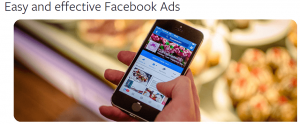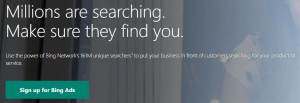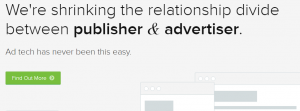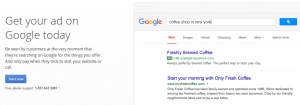- Sep 22, 2016
 0
0- by A2 Marketing Team
Despite the rise of adblockers, the online advertising industry managed to rake in $175 billion in 2015 alone – and those numbers continue to grow every year. One thing is clear. If you know how and where to spend your money, advertising online works.
The how is up to you, but we can help you with the where by pointing you towards the most efficient advertising platforms available on the web right now.
We’ll even go a step further and tell you which types of ads work best on each platform, how to use them efficiently, and provide you with a few case studies. We have a lot of ground to cover, so let’s get started!
1. Facebook Ads

Facebook needs no introduction – everyone and their cat has a Facebook account, but can we say the same for its ads platform? Facebook Ads enables you to display advertisements directly on Facebook user news feeds and in the Suggested Pages section.
Due to the nature of the platform, Facebook Ads is ideally suited to ads that mix images and text. Each ad includes your page’s name, a text description, a featured image or video, a call to action, and a Sponsored disclaimer.
Facebook Ads Features
- Enables advertisers to collect lead data without making customers go through a landing page.
- It leverages a mountain of user data to provide advertisers with in-depth reports, including age, regions, gender information, and more.
- You can also create and manage ads for Instagram.
How to Get the Most Out of Facebook Ads
When it comes to Facebook Ads, our best advice is to optimize your campaigns to make sure the approval process goes quickly. This means:
- Don’t create ads that significantly disrupt user newsfeeds. For example, avoid shocking images.
- Avoid making any claims that could lead users to believe their privacy has been breached.
- Don’t make any false promises in your ads. This one should be a given – no one enjoys being lied to!
Case Studies:
2. Google AdWords
Over 70% of all internet users rely on Google when they need to find information on the web, and that’s the only pitch that Google AdWords needs to make to get your attention. This platform integrates advertisements with search results by displaying ads in a right-hand sidebar under a Sponsored Links header, or right above organic search results for advertisers that want more prominent placement.
AdWords advertisements are text-only – hence the name – which may be a turn-off for some marketers, but they can still be useful if you have a knack for writing great calls to action.
Google AdWords Features
- Enables you to create call-only campaigns for users who do searches on mobile.
- The platform is capable of automatically pulling up information about your business using structured snippet extensions.
- You can also market directly to Gmail users.
How to Get the Most Out of Google AdWords
First of all, if you’re using Google Analytics, you should link it to your AdWords account – this will enable you to check your campaign data from your analytics reports.
Secondly, we recommend that you set your campaigns to rotate evenly under the AdWords Ad rotation setting. This will give all your campaigns an equal footing during the first 90 days of their life and then automatically optimize their rotation to favor higher converting campaigns.
Finally, it’s important to note that your AdWords advertisements will also display on some of Google’s partners by default (such as Ask and AOL). Depending on their performance, you might want to limit your advertisements strictly to Google platforms, which can be done from the Campaign Settings > Networks screen.
Case Studies:
3. Bing Ads

Despite the fact that Google retains a majority of the search engine market share, Bing Ads has been showing steady growth for a while – in fact, some people recommend that you use both platforms simultaneously to expand your reach.
Bing Ads enables you to display text ads alongside search results – much like AdWords – but the ads can also include small images to help them stand out. Furthermore, Bing Ads has the advantage of a smaller user base, which means less competition for your keywords, and lower marketing costs.
Bing Ads Features
- Enables you to pair your ads with images.
- Includes incredibly specific device targeting options, including operating systems, types of displays, and bid settings for specific devices.
How to Get the Most Out of Bing Ads
If you’re advertising an e-commerce business, Bing Ads enables you to create product ads which directly showcase your items. Product ads include images, titles, and prices directly in search results – all you need to do is create a catalog using the Bing Merchant Center.
Furthermore, Bing includes a negative keywords function, which automatically blocks under-performing keywords and reduces overall advertising expenditures. Using this tool, you can refine your ad targeting over time by adding poorly performing keywords to the negative keyword list when you create new campaigns.
Case Studies:
4. BuySellAds

BuySellAds is different from any of the other platforms we’ve featured. It empowers publishers to cut out the middlemen and directly negotiate the placement of ads on their sites. This way, advertisers can find space on sites that directly cater to their target audience rather than worrying about picking the right keywords.
The platform enables publishers to retain the final word over the ads they publish, which leads to higher-quality campaigns and fewer annoyed users.
BuySellAds Features
- Publishers can decide where ads get published and set their own prices.
- Final approval rights for each ad are up to publishers.
- Enables advertisers to choose the pages where their ads will appear, rather than having to select keywords.
How to Get the Most Out of BuySellAds
When it comes to BuySellAds, the success or failure of ads depends entirely on two factors – ad quality and the choosing the right website on which to display them.
BuySellAds supports split testing so that ads can be refined and improved over time. That just leaves choosing the right publishers, which is a matter of identifying your target audience and creating ads with that audience in mind.
Case Studies:
Conclusion
Using the best advertising platforms is the key to getting your message in front of as many eyes as possible. To get started, all you need to do is pick the right platform:
- Facebook Ads: Great for ads with media components.
- Google AdWords: Perfect for ads that rely on calls to action.
- Bing Ads: A cheaper alternative to Google AdWords which enables advertisers to display products directly in search results.
- BuySellAds: A direct marketing platform which empowers advertisers to select the exact websites where their ads will appear. It supports both text and banner ads.
Do you personally know of any online advertising success stories? Share your tale with us in the comments section below!
Have an eCommerce site that you’d like to take the next level? Visit A2 Hosting to learn about all of our high performance eCommerce solutions.
Image credit: Pixabay.













